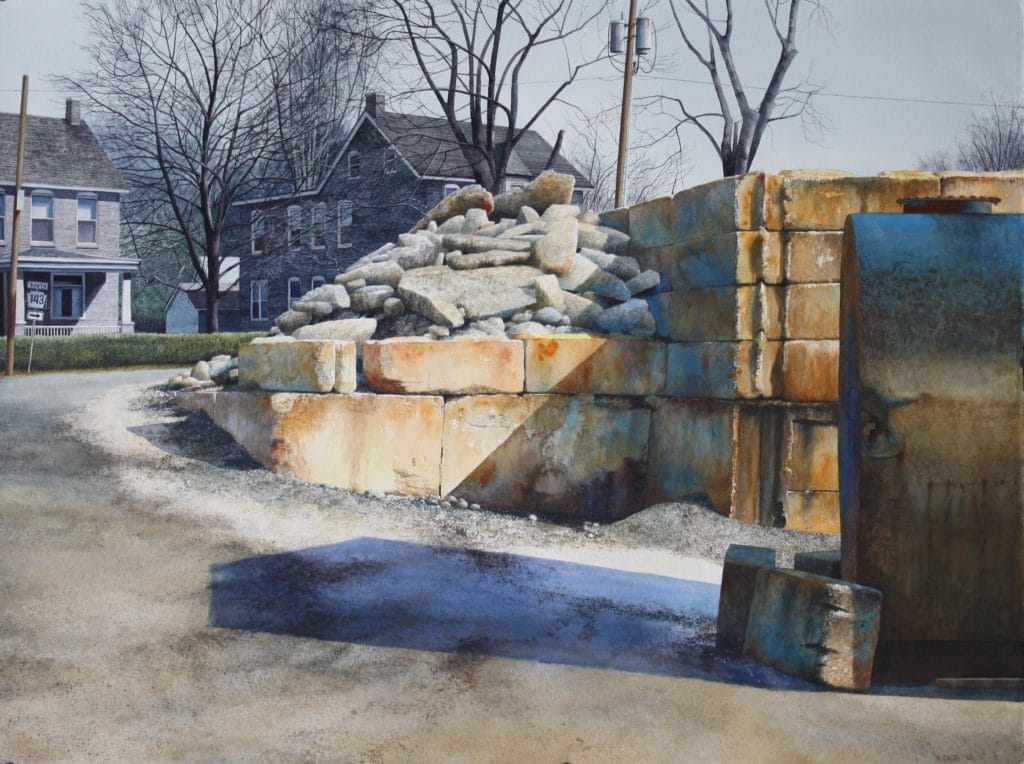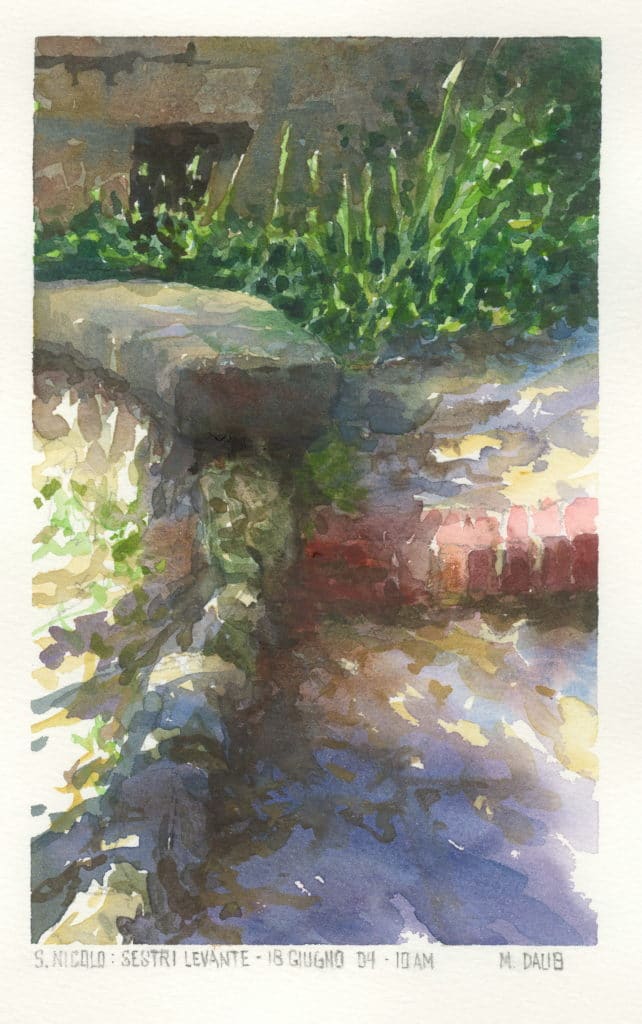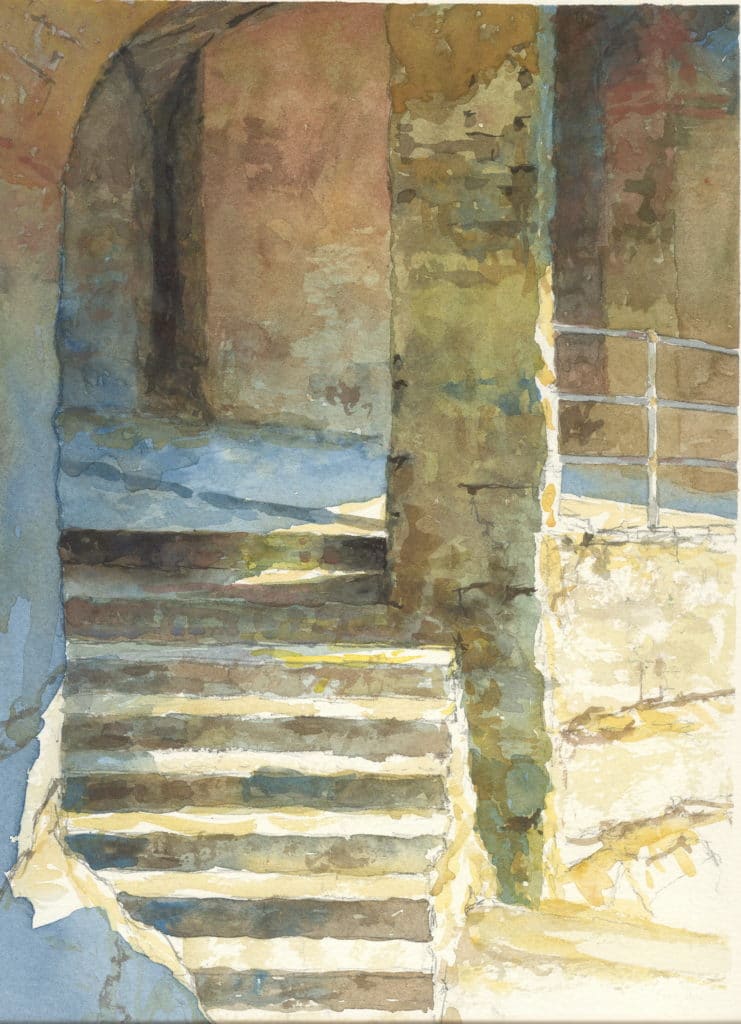By Joseph C. Skrapits
Matthew Daub has earned a national reputation for his large-scale studio watercolor paintings and Conté crayon drawings that mine the rich vein of small-town American subject matter explored by such 20th-century masters as Edward Hopper and Charles Sheeler. Like Sheeler, especially, Daub mixes a finely honed sensitivity to realistic detail with a powerful feeling for abstract form and composition.

In Rahn’s Concrete: Virginville, Pennsylvania, a series of stepped-back planes and chromatic transitions carries the eye from the richly hued rusting oil tank on the right, past the blue-gold contrast of shadows and iron-stained concrete that forms the picture’s center of interest, to the near-monochromatic houses and bare trees in the background. The watercolor’s compositional structure, a tight interlocking of big light-and-dark forms and sharp angles, echoes the interlocking concrete blocks in the wall that is the picture’s ostensible subject.
Besides being a virtuoso technical performance, the painting embodies what seems to be the central tension in Daub’s art: Inside the master realist, there’s a cubist struggling to get out. It’s not surprising, then, that among the pieces of advice Daub offers is this: “Remember that your real subject is not a doorway or a pot of flowers; it is the arrangement of shapes on the page.”

The subject in S. Nicolo: Sestri Levante is simply the ground at his feet, a welter of small shapes and many changes of value, color, and texture. Daub teased order out of potential chaos by emphasizing the central vertical axis, an elongated dark area placed between light areas on either side.

Sotto la Piazza, Portovenere is a study of reflected sunlight bouncing up into the shade of an ancient stone arcade. The steps introduce a bit of complexity to an elementary composition consisting of a single division into light and dark areas, although “dark” here is a relative term: Daub painted nearly all of the shadow areas with numerous small touches of luminous warm and cool midtones.
“Tonal armature is a fancy term for the skeleton of simple light-dark contrasts that anchors the composition,” Daub explains. “It’s a basic tool that became a signature device for the Macchiaioli, a group of 19th-century Italian plein air painters.” Daub’s plein air watercolors share some important characteristics with the works of the Macchiaioli (the name translates to “spot painters”): their small scale – rarely larger than 7 x 10 inches – their often-unspectacular subject matter (the better to focus on aesthetic qualities), and their personal rather than professional function.
The Macchiaioli never exhibited their plein air oil sketches publicly; they were shared and appreciated among the group, but not generally known, and certainly not intended for sale. Similarly, Daub has never exhibited his plein air watercolors in a gallery, although he does show them on his website. He considers them more in the way of a visual diary, recording moments in favorite places. He labels each one with the location, date, and time of day. “They wouldn’t be half so much fun to do if I worried about whether they were good enough to sell,” he laughs.
MATTHEW DAUB holds an M.A. in painting from Southern Illinois University. His watercolors are in the permanent collections of the Metropolitan Museum of Art, the Museum of the City of New York, the Evansville Museum of Art and Science, the Reading Public Museum, and numerous private collections throughout the United States.
JOSEPH C. SKRAPITS is an artist and freelance writer based in Allentown, Pennsylvania.
This article was excerpted from Plein Air Magazine.







